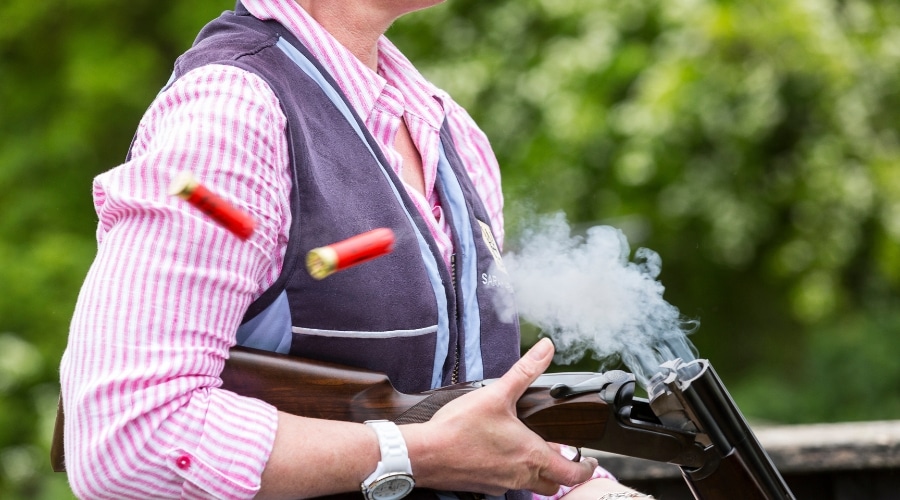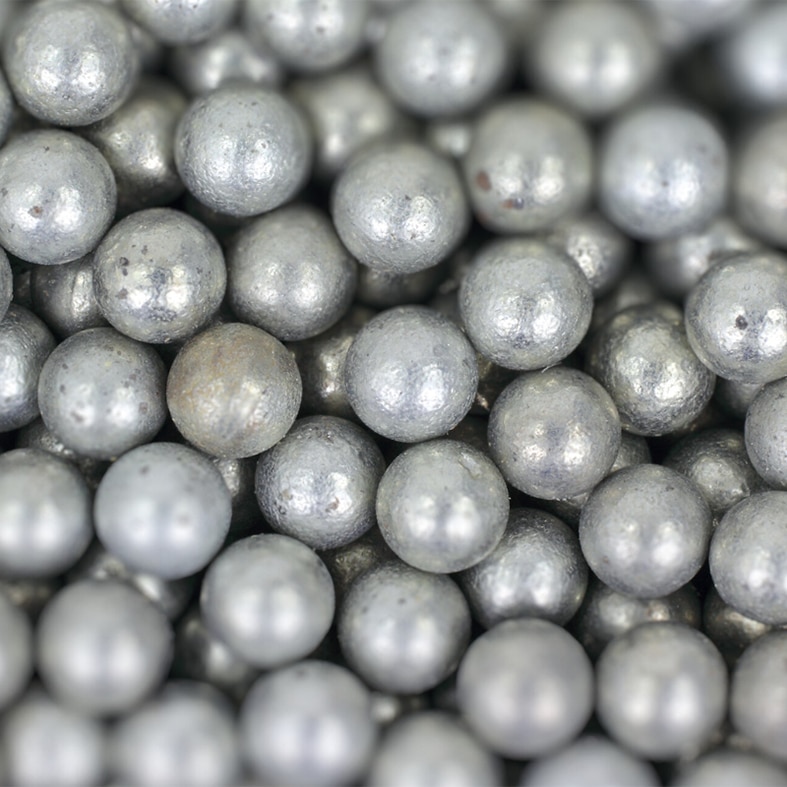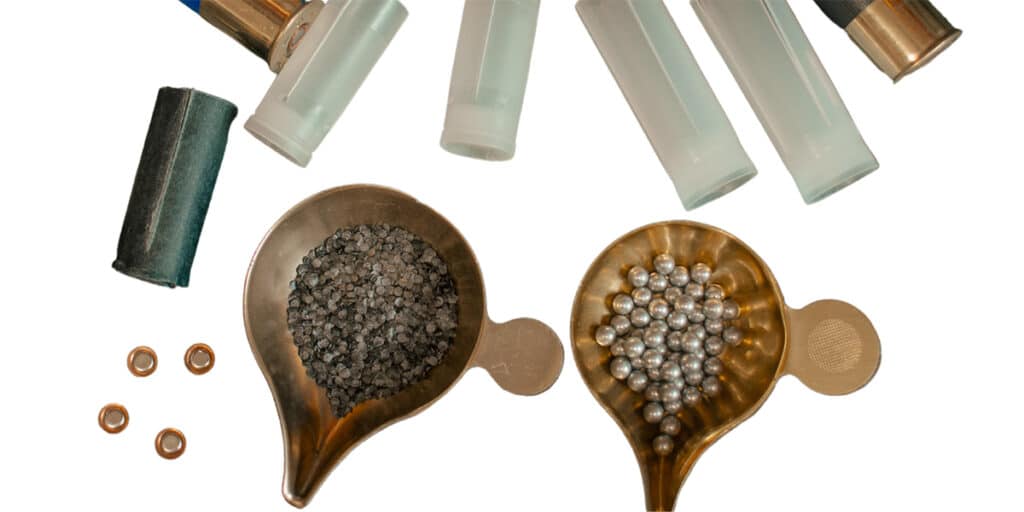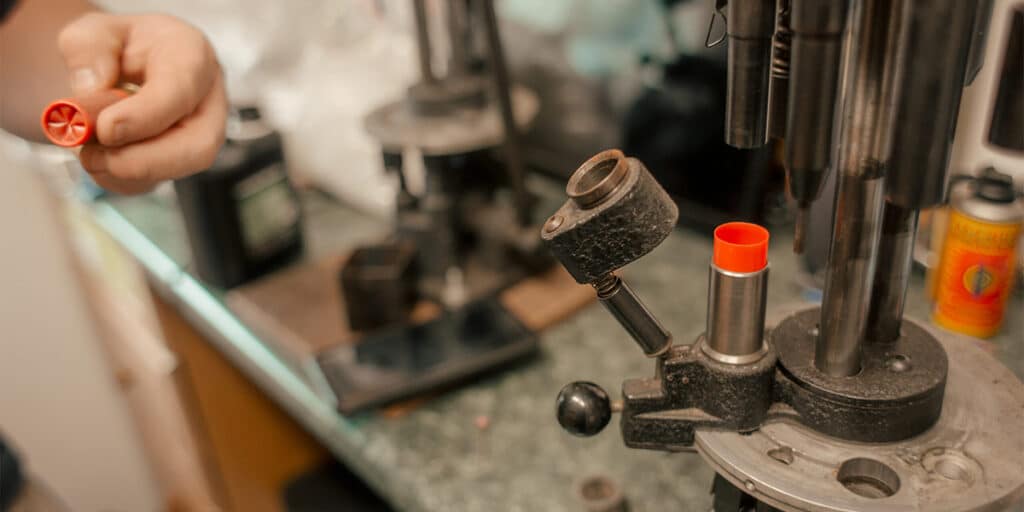
Join us for the Best In The Field Clay Shoot
BASC’s inaugural Best In The Field Clay Shoot is a competition with a difference, with targets set to replicate live quarry shooting.
Get information on the legal shooting season for mammals and birds in the UK.
Learn about our current conservation projects and how you can get involved.
Comprehensive information and advice from our specialist firearms team.
Everything you need to know about shotgun, rifle and airgun ammunition.
Find our up-to-date information, advice and links to government resources.
Everything you need to know on firearms law and licensing.
All the latest news and advice on general licences and how they affect you.


Home loading your own shotgun cartridges is not as difficult as you may think, provided you follow tried and tested procedures.
By BASC wildfowling advisor Chris Wright, and an experienced home loader and a member of the BASC Wildfowling Liaison Committee William Wykes.
It’s safe to say that ‘home loading’ is far from a new venture carried out by the modern sportsman or hunter of today. In fact, loading a firearm or other object with a charge and projectile has been going on for a very long time. The process, however, has evolved tremendously.
It is believed that, as far back as the 10th Century, people in China were using bamboo tubes containing gunpowder as ‘fire lances’. Evolution continued for quite some time before man started to put a projectile-launching contraption to his shoulder.
The basic concept today is very much the same as it was, yet the advancements over hundreds of years in technology and materials have taken home loading to a whole new level.
In the context of modern-day shooting – specifically wildfowling – there are various benefits to loading your own lead-free cartridges.
Customisation is surely near the top of the list; home loading enables you to create a bespoke load suited to the nature of your shooting, your quarry, and the guns you use.
This is, of course, good news for those who own gauges for which commercial ammunition is hard to come by. Home loading allows us to keep using the 8 bores and 10 bores and even the sub-gauges with new, super-dense, tungsten-based shot types.
Performance is a real boon, too; many ‘fowlers will attest to the greater consistency of home loads when compared to mass-produced factory ammunition, citing better patterns and the ability to increase velocities.
Cost? Well, it depends on the gauge and the loads you are producing, but loading your own lead-free cartridges can be the more cost-effective option. You are not restricted to what ammunition your local gun shop stocks, either.
The personal satisfaction from bringing home birds for the table that you have shot with cartridges of your own making also shouldn’t be overlooked. Home loading is an enjoyable hobby that can be done in the closed season.

Depending on your budget and/or how many cartridges you expect to use in a season, you may not need to buy a cartridge reloading press. Instead, using accurate scales and a roll turnover tool to finish a cartridge off (as opposed to crimping) might suffice. As you enhance your knowledge and experience as a home loader you can always upgrade to a purpose-built press – and there are many to choose from.
The advantages of a press include resizing stations and the ability to fold-crimp rather than roll-turn your cartridges. The overall reloading process is quicker, too. However, the most important cog in the machine is an up-to-date reloading manual. A reputable manual will give you all the information you need to start your reloading adventure. Many include step-by-step instructions of proper reloading procedures, but also advice on what loads are best suited to your requirements.
Many of the published manuals are from the US but use a selection of the same components and give a mixed array of load recipes for every circumstance.

Once you have obtained all the tools and materials required, you can set aside some time to get the ball rolling on your journey as a home loader. It is important that you follow the instructions from the loading manuals and/or advice from someone with experience. Do not deviate from published load data, don’t substitute one component for another and double-check everything. If something doesn’t feel or look right, seek advice.
In an ideal world you will have an experienced home loader at the end of the phone or sat by your side for guidance, but I know many people who have used online groups and forums to talk to likeminded people who are only too happy to keep them on the right track. Do be careful when watching videos online, though; there are plenty of good videos out there but there are also plenty of bad ones…
Once you have made a batch or various batches of variants, pattern testing your handiwork is a vital next step. Tailor your load and choke tube combination to your shooting style to get the best possible results from your own cartridges. If things don’t look as good as you hoped, then go back and make changes. For example, if your BB steel pattern looks sparse at your intended range, drop down a pellet size and try the next load with Bs to increase the pattern density. Loading your own will give you complete control.
Loading manuals will give approximate velocities for each load recipe but it is recommended to chronograph your loads to give you a real time indication of what they are doing once fired from your gun. This ensures your shot has the necessary velocity/lethality to bring down your intended quarry, in turn providing the confidence that you will be shooting humanely.
Remember, if you are struggling, reach out to someone who knows what they are doing.
Finally, please be careful but enjoy the process and hopefully the results from the season ahead.
If you have any questions or concerns or don’t quite know where to start – whether it’s wildfowling, home loading, or any other related query – please, contact your regional team or use this form to message a specific department. You can also call our reception on 01244 573 000 to be connected to a relevant department or individual.

BASC’s inaugural Best In The Field Clay Shoot is a competition with a difference, with targets set to replicate live quarry shooting.

The assurance scheme built by British Game Assurance will be transferred to Aim to Sustain, it was announced today.

BASC’s research team are working with the University of Exeter to look into the changes in game bags over time.
Sign up to our weekly newsletter and get all the latest updates straight to your inbox.
© 2023 British Association for Shooting and Conservation. Registered Office: Marford Mill, Rossett, Wrexham, LL12 0HL – Registered Society No: 28488R. BASC is a trading name of the British Association for Shooting and Conservation Limited which is authorised and regulated by the Financial Conduct Authority (FCA) under firm reference number 311937.
If you have any questions or complaints about your BASC membership insurance cover, please email us. More information about resolving complaints can be found on the FCA website or on the EU ODR platform.
This website uses cookies so that we can provide you with the best user experience possible. Cookie information is stored in your browser and performs functions such as recognising you when you return to our website and helping our team to understand which sections of the website you find most interesting and useful.
Strictly Necessary Cookie should be enabled at all times so that we can save your preferences for cookie settings.
If you disable this cookie, we will not be able to save your preferences. This means that every time you visit this website you will need to enable or disable cookies again.
This website uses Google Analytics to collect anonymous information such as the number of visitors to the site, and the most popular pages.
Keeping this cookie enabled helps us to improve our website.
Please enable Strictly Necessary Cookies first so that we can save your preferences!
More information about our Cookie Policy